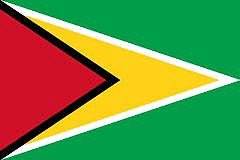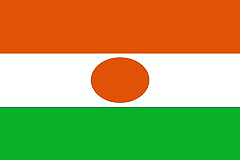
Banning Gay Conversion Therapy

9.4% or 22 countries have nationwide bans in place concerning Gay Conversion Therapy
Individuals who identify as gay, lesbian, bisexual, transgender, and all groups with non-traditional gender and sexual identities, collectively known as the LGBTQIA+ community, were historically viewed as having a mental illness or making a conscious choice in thinking or feeling the way they do. With research and greater understanding, the world now recognises that individuals who identify as LGBTQIA+ are not doing so by choice. Instead, it is a chemical or physical reaction that cannot be changed. Gay Conversion Therapy was developed when LGBTQIA+ identities were classified as an illness, and often brutal, so-called therapies were applied, hoping to change a person into becoming heterosexual or cis-gendered.
Medical science and numerous national psychiatric associations have condemned the use of Gay Conversion Therapy. Many stating that the therapy is ineffective in changing how a person identifies. The Banning Gay Conversion Therapy index looks at all countries worldwide and those that have outlawed or banned Gay Conversion Therapies


- 8.6% or 18.5 million individuals from the global LGBTQIA+ community live now in countries in which Gay Conversion Therapy is banned
- Iran, Malaysia and Uganda have made Gay Conversion Therapy not only Legal but it is also made it approved by the state
- 17 of the 22 countries that have nationwide bans concerning Gay Conversion Therapy have a status of Very High within the 2024 Worldwide LGBTQIA+ Equality Index
- 9.4% or 22 countries have nationwide bans in place concerning Gay Conversion Therapy
- Europe has eleven countries that have introduced nationwide bans on Gay conversion therapy, making it the highest, followed by the Americas with five
- 91.4% or 195.8 million individuals from the global LGBTQIA+ community live in countries in which Gay Conversion Therapy is not banned
- 8.6% or 18.5 million individuals from the global LGBTQIA+ community live now in countries in which Gay Conversion Therapy is banned
- Iran, Malaysia and Uganda have legalised Gay Conversion Therapy Legal and made it state-approved. An estimated 4.6 million LGBTQIA+ individuals living in those countries are now subject to the therapy and subsequent treatments
- 17 of the 22 countries that have nationwide bans concerning Gay Conversion Therapy have a status of Very High within the 2024 Worldwide LGBTQIA+ Equality Index
- 5 of the 22 countries that have nationwide bans relating to Gay Conversion Therapy have a status of Medium within the 2024 Worldwide LGBTQIA+ Equality Index
- Some countries such as Australia, China, and the United States of America either have bans in specific states, regions or provinces or cases are reviewed on a case-by-case basis; there currently are no nationwide laws making the practice a crime in those countries
- Belgium, the Republic of Cyprus, Iceland, Norway, Portugal and Spain all implemented bans on conversion therapy in 2023-2024
- Uganda, as part of Section 16 of the Anti-Homosexuality Act, 2023, the courts have been given powers to force LGBTQIA+ individuals to undergo gay conversion therapy, making it state-approved
EXCEPTIONAL AND DIVERSE LGBTQIA+ COMMUNITY
 Click on a specific country within the map to find out the legal status of Gay Conversion Therapy
Click on a specific country within the map to find out the legal status of Gay Conversion TherapyTAKING PRIDE IN YOU

For years, psychiatrists, religious leaders and therapy practitioners would adopt various methods to convert LGBTQIA+ individuals. Nazi scientists during world war two were known for experimenting on gay and lesbian prisoners, often torturing and applying psychological warfare to see how they would react. Treatments such as lobotomies, severing connections in the brain’s prefrontal cortex, chemical castrations and aversion therapies were all the various methods used by practitioners. Treatments such as aversion therapy or conditioning are still used today, with practitioners applying electric shock, drugs, the use of sexually erotic images, and the power of suggestion.
Even with all those extreme and barbaric practices, most of those undergoing the therapy suffered brain damage or still identified as LGBTQIA+ after the so-called treatment. Though there are extreme cases relating to Gay Conversion Therapy, some groups often apply less drastic measures, especially the religious groups carrying out the therapy. Many typically use prayer, group therapy and materials designed to reprogramme or re-educate the recipients. Regardless of the approach and the low number of success cases, Gay Conversion Therapy still treats LGBTQIA+ as a mental disease, one that can be cured.
Many of those that undertake Gay Conversion Therapy will be young, typically receiving therapy after puberty from ages 13 to 21—undergoing treatment when they begin to realise or identify as LGBTQIA+. Most are afraid, scared of being different and fearful that they will be rejected by their families or loved ones. With many considered young adults or minors, the parents or guardians often provide consent for their child or a child in their ward to undergo therapy. With modern medical science and understanding, it is clear why these types of treatments fail, as it works on the belief that the person is making a choice. The only decision for those undertaking the therapy is to deny, suppress, or hide who they are rather than changing how they honestly think or feel.
The Banning Gay Conversion Therapy looks at all countries worldwide and those that endorse, ban or allow the therapy to take place.
WHO DO YOU CALL IN AN EMERGENCY...

Why is Gay Conversion Therapy still allowed in the majority of countries worldwide?

Is there any science behind Gay Conversion Therapy?

Which age group are most affected by Gay Conversion Therapy?
LGBTQIA+ COUNTRY & REGION GUIDES
Please select a country from the drop-down list to discover common phrases relating to gay conversion therapy
EXCEPTIONAL PEOPLE MAKING HISTORY
Learn more about the status of Gay Conversion Therapy around the world by country name (in alphabetical order). If you want to learn more about any given country, please click on the flag, or the country name, which will open the required content in a new window


LGBTQIA+ Population compared to those countries that have banned Gay Conversion Therapy
The global LGBTQIA+ population is grouped by those countries that have nationwide bans concerning Gay Conversion Therapy, compared to those that have nothing in place
DISCOVER HOW WELL THE COMMUNITY ARE TREATED..

When reviewing data, it is crucial to understand what it represents, whether it reflects the world and the experience of all those affected. Changes within any given country or region are not restricted to a specific month of the year or even are automatically triggered. Change, especially concerning equality, gender recognition, same-sex marriages and the status of gay conversion therapy, often takes work. Typically by many large groups of dedicated and focused individuals advocating and fighting for justice for positive change within their local communities.
The indices have been created to help you understand the world around you; however, engaging with your global community is essential. It is vital, especially if you are familiar with your desired destination. By reaching out and communicating with other members of the LGBTQIA+ community, you can establish critical details. It only takes a small amount of effort in locating people from or those who have already visited your particular destination for advice. Engaging on social media and Gayther’s networking platform, Gayther Affinity, can help you connect with the global LGBTQIA+ community.
Gayther...your community resources
Three dedicated websites offer various tools, services, guides, and much more. Free tools and services tailored toward all groups within the global LGBTQIA+ community
There are thousands of events taking place, it is not always easy to know what is going on and when, Gayther can help
RESOURCES TO HELP YOUR FRIENDS, FOLLOWERS, CUSTOMERS…
With over one thousand data points relating to weather stations worldwide, hundreds of LGBTQIA+ country and state travel guides, as well as community-related articles, fun and games, there is something for everyone on Gayther. Help your friends, followers or customers by including a badge or any one of the hundreds of colourful QR Codes within your newsletter, blog, vlog or website to direct them to resources that relate directly to you or your business or service. Discover QR Codes and Gayther Badges today
- The index has been compiled and is correct as of Jun 8, 2024
- The index has been compiled using a variety of different sources, including news articles, publications and websites such as Wikipedia
IMPORTANT DISCLAIMER: The Banning Gay Conversion Therapy index has been compiled based on the rules and laws that exist at a national level, rather than for any given region, state or province. The LGBTQIA+ Gender Identity Recognition index is for illustrative purposes only and does not constitute advice. It is essential that you carry out independent research on any country as laws and regulations change frequently. Though we endeavour to keep all information across the site updated, we do not provide any guarantees to the accuracy and completeness of any information displayed. This page may contain external links to third party websites; Gayther provides these links for your convenience and does not endorse, warrant or recommend any particular products or services. By clicking on any external links, you will leave Gayther and be taken to the third-party website, which you do so at your own risk and by accessing the site, you will be required to comply with the external third party’s terms and conditions of use and privacy policies
Find emergency contact numbers quickly for every country worldwide
Home » Community Resources » Worldwide Banning Gay Conversion Therapy
Functional Always active
Preferences
Statistics
Marketing
Accessibility
Accessibility modes
Online Dictionary
Readable Experience
Visually Pleasing Experience
Easy Orientation
Home | GAYTHER LGBT
Accessibility Statement
- gayther.lgbt
- December 22, 2024
Compliance status
We firmly believe that the internet should be available and accessible to anyone, and are committed to providing a website that is accessible to the widest possible audience, regardless of circumstance and ability.
To fulfill this, we aim to adhere as strictly as possible to the World Wide Web Consortium’s (W3C) Web Content Accessibility Guidelines 2.1 (WCAG 2.1) at the AA level. These guidelines explain how to make web content accessible to people with a wide array of disabilities. Complying with those guidelines helps us ensure that the website is accessible to all people: blind people, people with motor impairments, visual impairment, cognitive disabilities, and more.
This website utilizes various technologies that are meant to make it as accessible as possible at all times. We utilize an accessibility interface that allows persons with specific disabilities to adjust the website’s UI (user interface) and design it to their personal needs.
Additionally, the website utilizes an AI-based application that runs in the background and optimizes its accessibility level constantly. This application remediates the website’s HTML, adapts Its functionality and behavior for screen-readers used by the blind users, and for keyboard functions used by individuals with motor impairments.
If you’ve found a malfunction or have ideas for improvement, we’ll be happy to hear from you. You can reach out to the website’s operators by using the following email info@gayther.com
Screen-reader and keyboard navigation
Our website implements the ARIA attributes (Accessible Rich Internet Applications) technique, alongside various different behavioral changes, to ensure blind users visiting with screen-readers are able to read, comprehend, and enjoy the website’s functions. As soon as a user with a screen-reader enters your site, they immediately receive a prompt to enter the Screen-Reader Profile so they can browse and operate your site effectively. Here’s how our website covers some of the most important screen-reader requirements, alongside console screenshots of code examples:
-
Screen-reader optimization: we run a background process that learns the website’s components from top to bottom, to ensure ongoing compliance even when updating the website. In this process, we provide screen-readers with meaningful data using the ARIA set of attributes. For example, we provide accurate form labels; descriptions for actionable icons (social media icons, search icons, cart icons, etc.); validation guidance for form inputs; element roles such as buttons, menus, modal dialogues (popups), and others. Additionally, the background process scans all the website’s images and provides an accurate and meaningful image-object-recognition-based description as an ALT (alternate text) tag for images that are not described. It will also extract texts that are embedded within the image, using an OCR (optical character recognition) technology. To turn on screen-reader adjustments at any time, users need only to press the Alt+1 keyboard combination. Screen-reader users also get automatic announcements to turn the Screen-reader mode on as soon as they enter the website.
These adjustments are compatible with all popular screen readers, including JAWS and NVDA.
-
Keyboard navigation optimization: The background process also adjusts the website’s HTML, and adds various behaviors using JavaScript code to make the website operable by the keyboard. This includes the ability to navigate the website using the Tab and Shift+Tab keys, operate dropdowns with the arrow keys, close them with Esc, trigger buttons and links using the Enter key, navigate between radio and checkbox elements using the arrow keys, and fill them in with the Spacebar or Enter key.Additionally, keyboard users will find quick-navigation and content-skip menus, available at any time by clicking Alt+1, or as the first elements of the site while navigating with the keyboard. The background process also handles triggered popups by moving the keyboard focus towards them as soon as they appear, and not allow the focus drift outside it.
Users can also use shortcuts such as “M” (menus), “H” (headings), “F” (forms), “B” (buttons), and “G” (graphics) to jump to specific elements.
Disability profiles supported in our website
- Epilepsy Safe Mode: this profile enables people with epilepsy to use the website safely by eliminating the risk of seizures that result from flashing or blinking animations and risky color combinations.
- Visually Impaired Mode: this mode adjusts the website for the convenience of users with visual impairments such as Degrading Eyesight, Tunnel Vision, Cataract, Glaucoma, and others.
- Cognitive Disability Mode: this mode provides different assistive options to help users with cognitive impairments such as Dyslexia, Autism, CVA, and others, to focus on the essential elements of the website more easily.
- ADHD Friendly Mode: this mode helps users with ADHD and Neurodevelopmental disorders to read, browse, and focus on the main website elements more easily while significantly reducing distractions.
- Blindness Mode: this mode configures the website to be compatible with screen-readers such as JAWS, NVDA, VoiceOver, and TalkBack. A screen-reader is software for blind users that is installed on a computer and smartphone, and websites must be compatible with it.
- Keyboard Navigation Profile (Motor-Impaired): this profile enables motor-impaired persons to operate the website using the keyboard Tab, Shift+Tab, and the Enter keys. Users can also use shortcuts such as “M” (menus), “H” (headings), “F” (forms), “B” (buttons), and “G” (graphics) to jump to specific elements.
Additional UI, design, and readability adjustments
- Font adjustments – users, can increase and decrease its size, change its family (type), adjust the spacing, alignment, line height, and more.
- Color adjustments – users can select various color contrast profiles such as light, dark, inverted, and monochrome. Additionally, users can swap color schemes of titles, texts, and backgrounds, with over seven different coloring options.
- Animations – person with epilepsy can stop all running animations with the click of a button. Animations controlled by the interface include videos, GIFs, and CSS flashing transitions.
- Content highlighting – users can choose to emphasize important elements such as links and titles. They can also choose to highlight focused or hovered elements only.
- Audio muting – users with hearing devices may experience headaches or other issues due to automatic audio playing. This option lets users mute the entire website instantly.
- Cognitive disorders – we utilize a search engine that is linked to Wikipedia and Wiktionary, allowing people with cognitive disorders to decipher meanings of phrases, initials, slang, and others.
- Additional functions – we provide users the option to change cursor color and size, use a printing mode, enable a virtual keyboard, and many other functions.
Browser and assistive technology compatibility
We aim to support the widest array of browsers and assistive technologies as possible, so our users can choose the best fitting tools for them, with as few limitations as possible. Therefore, we have worked very hard to be able to support all major systems that comprise over 95% of the user market share including Google Chrome, Mozilla Firefox, Apple Safari, Opera and Microsoft Edge, JAWS and NVDA (screen readers).
Notes, comments, and feedback
Despite our very best efforts to allow anybody to adjust the website to their needs. There may still be pages or sections that are not fully accessible, are in the process of becoming accessible, or are lacking an adequate technological solution to make them accessible. Still, we are continually improving our accessibility, adding, updating and improving its options and features, and developing and adopting new technologies. All this is meant to reach the optimal level of accessibility, following technological advancements. For any assistance, please reach out to info@gayther.com






































































































































































































































































